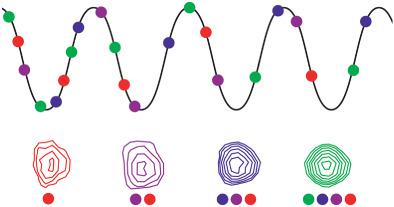当前位置:
X-MOL 学术
›
Magn. Reson. Chem.
›
论文详情
Our official English website, www.x-mol.net, welcomes your feedback! (Note: you will need to create a separate account there.)
Software for reconstruction of non-uniformly sampled NMR data
Magnetic Resonance in Chemistry ( IF 2 ) Pub Date : 2020-07-14 , DOI: 10.1002/mrc.5060 Christian Parsbaek Pedersen 1 , Andreas Prestel 1 , Kaare Teilum 1
Magnetic Resonance in Chemistry ( IF 2 ) Pub Date : 2020-07-14 , DOI: 10.1002/mrc.5060 Christian Parsbaek Pedersen 1 , Andreas Prestel 1 , Kaare Teilum 1
Affiliation

|
Non-uniform sampling (NUS) of multidimensional NMR experiments is a powerful tool to obtain high resolution spectra with less instrument time. With NUS only a subset of the points needed for conventional Fourier transformation is recorded and sophisticated algorithms are needed to reconstruct the missing data points. During the last decade several software packages implementing the reconstruction algorithms have emerged and been refined and now result in spectra of almost similar quality as spectra from conventionally recorded and processed data. However, from the number of literature references to the reconstruction methods many more multi-dimensional NMR spectra could presumably be recorded with NUS. To help researchers considering starting using NUS for their NMR experiments we here review 13 different reconstruction methods found in five software packages (CambridgeCS, hmsIST, MddNMR, NESTA-NMR and SMILE). We have compared how the methods run with the provided example scripts for reconstructing a non-uniform sampled three-dimensional 15 N-NOESY-HSQC at sampling densities from 5% to 50%. Overall, the spectra are all of similar quality above 20% sampling density. Thus, without any particular knowledge about the details of the reconstruction algorithms significant reduction in the experiment time can be achieved. Below 20% sampling density, the intensities of particular weak peaks start being affected, while MddNMR's IST with virtual echo and the SMILE algorithms still reproduced the spectra with the highest accuracy of peak intensities.
中文翻译:

用于重建非均匀采样 NMR 数据的软件
多维 NMR 实验的非均匀采样 (NUS) 是一种强大的工具,可以用更少的仪器时间获得高分辨率光谱。NUS 只记录了传统傅立叶变换所需点的一个子集,并且需要复杂的算法来重建丢失的数据点。在过去的十年中,出现并改进了几个实现重建算法的软件包,现在产生的光谱质量几乎与来自常规记录和处理数据的光谱相似。然而,从参考文献的数量到重建方法,可能可以用 NUS 记录更多的多维 NMR 谱。为了帮助考虑开始使用 NUS 进行 NMR 实验的研究人员,我们在此回顾了在五个软件包(CambridgeCS、hmsIST、MddNMR、NESTA-NMR 和 SMILE)中发现的 13 种不同的重建方法。我们比较了这些方法如何与提供的示例脚本运行,以在 5% 到 50% 的采样密度下重建非均匀采样的三维 15 N-NOESY-HSQC。总体而言,高于 20% 采样密度的光谱都具有相似的质量。因此,无需任何关于重建算法细节的特定知识,就可以实现实验时间的显着减少。低于 20% 的采样密度,特定弱峰的强度开始受到影响,而带有虚拟回波的 MddNMR IST 和 SMILE 算法仍然以最高的峰强度精度再现光谱。
更新日期:2020-07-14
中文翻译:

用于重建非均匀采样 NMR 数据的软件
多维 NMR 实验的非均匀采样 (NUS) 是一种强大的工具,可以用更少的仪器时间获得高分辨率光谱。NUS 只记录了传统傅立叶变换所需点的一个子集,并且需要复杂的算法来重建丢失的数据点。在过去的十年中,出现并改进了几个实现重建算法的软件包,现在产生的光谱质量几乎与来自常规记录和处理数据的光谱相似。然而,从参考文献的数量到重建方法,可能可以用 NUS 记录更多的多维 NMR 谱。为了帮助考虑开始使用 NUS 进行 NMR 实验的研究人员,我们在此回顾了在五个软件包(CambridgeCS、hmsIST、MddNMR、NESTA-NMR 和 SMILE)中发现的 13 种不同的重建方法。我们比较了这些方法如何与提供的示例脚本运行,以在 5% 到 50% 的采样密度下重建非均匀采样的三维 15 N-NOESY-HSQC。总体而言,高于 20% 采样密度的光谱都具有相似的质量。因此,无需任何关于重建算法细节的特定知识,就可以实现实验时间的显着减少。低于 20% 的采样密度,特定弱峰的强度开始受到影响,而带有虚拟回波的 MddNMR IST 和 SMILE 算法仍然以最高的峰强度精度再现光谱。


























 京公网安备 11010802027423号
京公网安备 11010802027423号